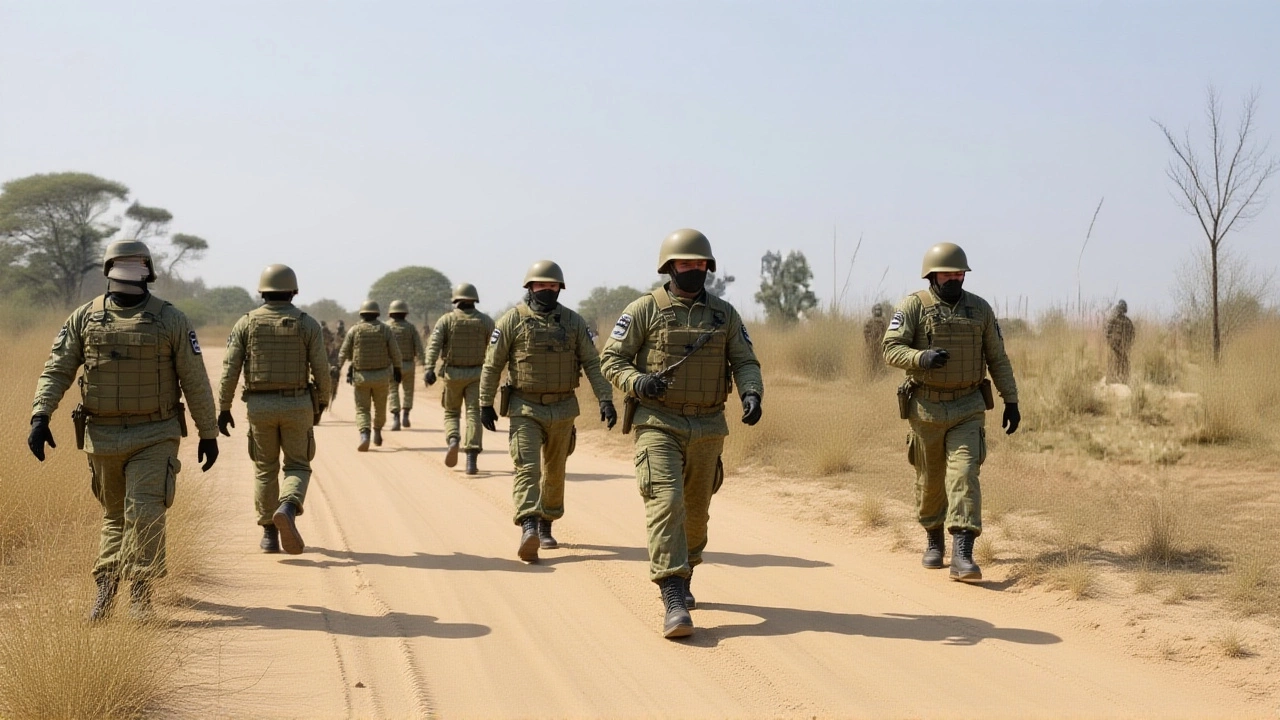On the 350th anniversary of Guru Tegh Bahadur’s martyrdom, a surprising shift in holiday dates has sparked quiet debate across northern India. While the historical event occurred on November 11, 1675 — when the ninth Sikh Guru was executed in Delhi for defending religious freedom — the traditional commemoration has long been observed on November 24. But this year, Delhi, Uttar Pradesh, Haryana, and Chandigarh have all declared November 25, 2025 as a public holiday. Only Uttarakhand stuck with the traditional date. The move isn’t just bureaucratic; it’s symbolic, aligning the holiday with a weekday to maximize public participation in ceremonies that will stretch across three days at Lal Qila in Delhi.
Why the Date Shift? A Practical Decision With Deep Meaning
It’s not that anyone disputed the historical date. Guru Tegh Bahadur was beheaded on November 11, 1675, after months of imprisonment and witnessing the brutal executions of his three disciples. But November 24, 2025, falls on a Monday — a day many offices and schools already close for the weekend. The real challenge was ensuring maximum visibility and participation. That’s why Delhi Chief Minister Rekha Gupta announced on November 23 that the holiday would shift to Tuesday, November 25. Manish Chauhan, Principal Secretary of Uttar Pradesh’s General Administration Department, echoed the move, revising the state’s official calendar to reflect the new date. The message was clear: don’t let tradition bury the opportunity for collective remembrance.
Here’s the twist: November 25 is also the day the Shiromani Gurdwara Parbandhak Committee (SGPC) has scheduled its flagship event — a grand light-and-sound show at Lal Qila, followed by continuous kirtan darbars from November 23 to 25. By aligning the holiday with the peak of these events, authorities ensured that students, government employees, and the public could attend without taking personal leave. Schools and colleges across Delhi, Noida, and the NCR will remain closed on the 25th. It’s a rare case where administrative pragmatism didn’t dilute reverence — it amplified it.
The Legacy of ‘Hind di Chadar’
Guru Tegh Bahadur didn’t die fighting for Sikhs alone. He died for Hindus — specifically, for Kashmiri Pandits who were being forced to convert under Emperor Aurangzeb’s religious edicts. When the Pandits appealed to him, the Guru famously said, “If you want to protect your faith, I will stand before the tyrant.” He traveled to Delhi, was arrested, and offered a choice: convert to Islam or die. He chose death. For this, he became known as Hind di Chadar — the shield of India.
His martyrdom wasn’t just a moment of resistance; it was a theological landmark. Unlike many who fought with weapons, Guru Tegh Bahadur fought with unwavering moral courage. He watched his companions — Bhai Mati Das, Bhai Sati Das, and Bhai Dayala — tortured and killed before him. Bhai Mati Das was sawn alive. Bhai Sati Das was burned alive wrapped in cotton. Bhai Dayala was boiled alive in a cauldron. And still, Guru Tegh Bahadur refused to renounce his faith. His final words? “Let truth prevail.”
How the Nation Remembers
Every year, gurdwaras across India and the world hold akhand path (continuous reading of the Guru Granth Sahib), ardas (prayers), and community meals. This year, the scale is unprecedented. The SGPC has coordinated with local authorities to ensure free transport to Lal Qila on November 25. In Amritsar, a 10-hour kirtan marathon will begin at dawn. In Chandigarh, schoolchildren will perform plays reenacting the Guru’s journey. Even in cities like Bengaluru and Kolkata, non-Sikh groups are organizing interfaith vigils.
What’s striking is how the commemoration has transcended religious boundaries. Hindu temples in Delhi and Uttar Pradesh are holding special prayers for the Guru’s sacrifice. Muslim scholars in Hyderabad and Jaipur have issued statements honoring his stand for pluralism. In a country often divided along faith lines, this is a rare moment of shared moral clarity.

What Comes Next?
The SGPC is pushing for November 24 to be recognized as a national martyrdom day across India — not just a state holiday. They’re also lobbying to include Guru Tegh Bahadur’s story in the NCERT curriculum nationwide. Meanwhile, the Delhi government has announced plans to install a permanent memorial at the site of his execution near Chandni Chowk, where a small shrine currently stands.
There’s a quiet irony here. The very empire that executed him — the Mughals — is now remembered by many as India’s golden age. But Guru Tegh Bahadur’s legacy reminds us: greatness isn’t measured in palaces and armies. It’s measured in who stands up when no one else will. His martyrdom wasn’t the end of a life — it was the beginning of a principle that still echoes.
Frequently Asked Questions
Why is Guru Tegh Bahadur’s martyrdom day celebrated on November 24 if he died on November 11?
The execution occurred on November 11, 1675, but the Sikh calendar (Nanakshahi) marks his martyrdom on the 11th day of the month of Kartik, which in 2025 corresponds to November 24. The shift to November 25 this year was administrative — to ensure a weekday holiday for public participation in events centered around the SGPC’s commemoration at Lal Qila.
Which states are observing a public holiday on November 25, 2025?
Delhi, Uttar Pradesh, Haryana, and Chandigarh have declared November 25 as a public holiday for Guru Tegh Bahadur’s 350th martyrdom anniversary. Uttarakhand continues to observe it on November 24, following the traditional date. All government offices, schools, and colleges in the four states will remain closed on the 25th.
What events are planned for the 350th anniversary?
The Shiromani Gurdwara Parbandhak Committee (SGPC) is organizing a three-day program from November 23 to 25 at Lal Qila in Delhi, featuring a grand light-and-sound show, continuous kirtan darbars, and poetry recitals. Free transport is being arranged from nearby cities. Similar events are happening in Amritsar, Chandigarh, and major Sikh-populated areas across India.
Why is Guru Tegh Bahadur called ‘Hind di Chadar’?
He earned this title — meaning ‘Shield of India’ — after he sacrificed his life to protect Kashmiri Pandits from forced conversion under Mughal Emperor Aurangzeb. His stand wasn’t for Sikh rights alone; it was for the right of all people to practice their faith freely. This universal defense of religious liberty made him a symbol of resistance beyond the Sikh community.
How is this year’s commemoration different from past years?
This is the first time a public holiday has been aligned with a major state-sponsored event at Lal Qila, turning the anniversary into a nationally visible moment. The SGPC’s coordinated three-day program, combined with state-level holiday declarations, has created unprecedented public engagement. Even non-Sikh groups are participating, signaling a broader cultural recognition of his legacy.
Will this lead to Guru Tegh Bahadur being included in school curricula?
Yes. The SGPC and several state education departments are actively pushing to include his life and sacrifice in NCERT textbooks and state syllabi. Delhi’s education minister has already directed curriculum committees to draft a module on his role in defending religious pluralism, with plans to roll it out in 2026. This could make him one of the few religious figures honored in national education for moral courage, not just faith.




Write a comment